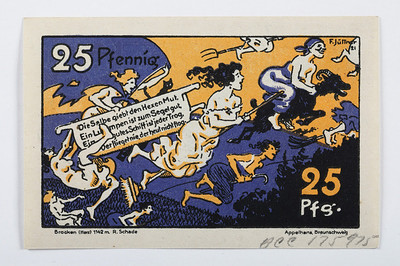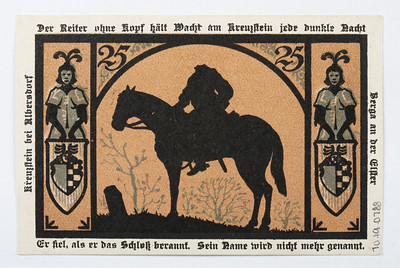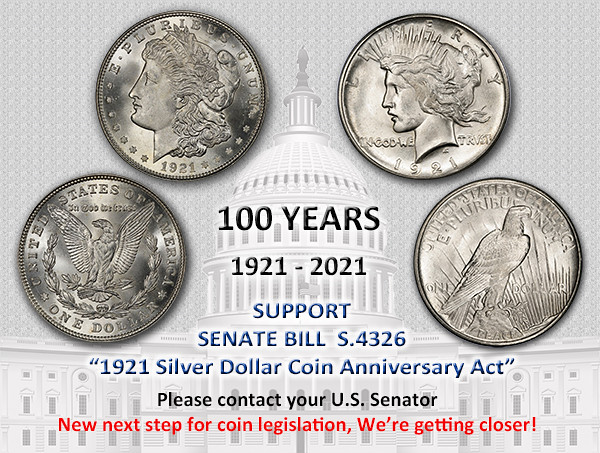
PREV ARTICLE
NEXT ARTICLE
FULL ISSUE
PREV FULL ISSUE
NOTGELD TALESAlisha Ankin is a collections specialist working with the National Numismatic Collection. This week she authored a Smithsonian O Say Can You See? blog post about WWI emergency money. A couple of the pieces are especially appropriate for Halloween. See the complete article online for more. -Editor After the end of World War I, Germany was in economic crisis and was unable to provide enough currency for its citizens. In response, cities and towns under German control created their own form of emergency currency, called notgeld, to supplement the limited national currency in circulation. The locally-issued notgeld were highly illustrated, colorful, and featured scenes of local architecture and culture. One particularly interesting element of these notes is the frequent depiction of local legends and folklore. These scenes provide a lens into how local folklore and history might have provided messages of comfort or warning at a time of uncertainty. The following four pieces of notgeld offer a glimpse into life in Germany after the end of the First World War.
Witches 
25 pfennig note, Brocken, Germany, 1921 The German Harz Mountains and the small towns settled within them have a set of legends that reflect their local geography. The foggy town of Brocken is located at the top of the range's highest peak, and the townspeople embrace the folklore with themes of witchery and devilry that helped to make the region famous. One trail is called the Witches' Path and there are local landmarks called Hexentanzplatz (Witches' Dance Floor), Teufelsmauer (Devil's Wall), Hexenaltar (Witches' Altar). This 25 pfennig note from Brocken illustrates this folklore by depicting witches flying to meet with the Devil on Walpurgis Night, the eve of May Day. On that night, townspeople in Germany light fires on hillsides or dress up as witches and demons while playing loud music and lighting fireworks as a method to drive away evil spirits and witches.
Headless Horseman 
25 pfennig note, Berga, Germany, 1921 Stories from the Brothers Grimm appear on notgeld all throughout Germany, such as the headless horseman on this 25 pfennig note from Berga. Often, stories associate the headless horseman with loud or mysterious sounds or even sudden windstorms. It is believed that if a headless horseman appears to you, it is a warning to change your behavior and actions for the better or you too will suffer the same fate to wander the earth as a headless horseman.
To read the complete article, see:

Wayne Homren, Editor The Numismatic Bibliomania Society is a non-profit organization promoting numismatic literature. See our web site at coinbooks.org. To submit items for publication in The E-Sylum, write to the Editor at this address: whomren@gmail.com To subscribe go to: https://my.binhost.com/lists/listinfo/esylum All Rights Reserved. NBS Home Page Contact the NBS webmaster 
|